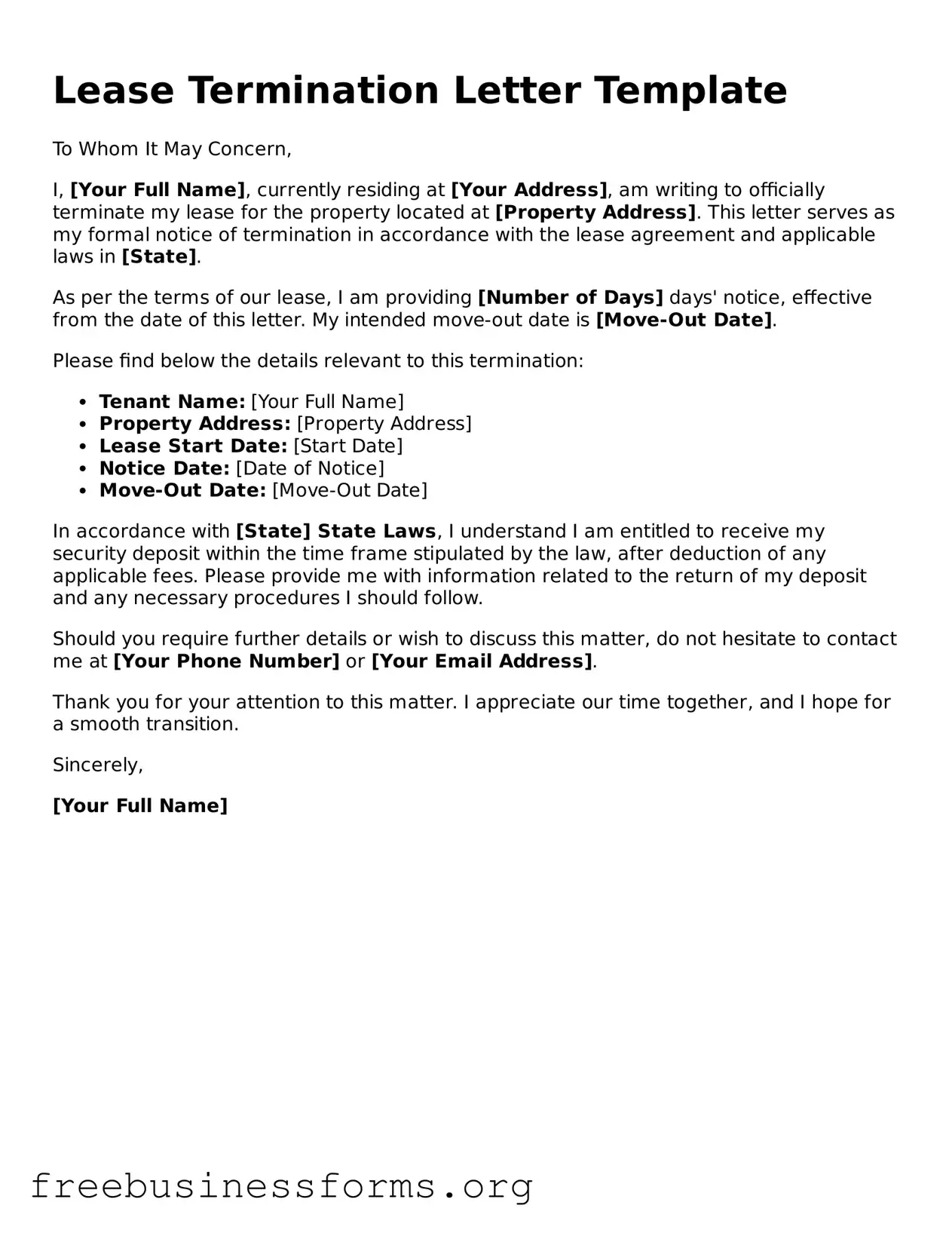Lease Termination Letter Template
To Whom It May Concern,
I, [Your Full Name], currently residing at [Your Address], am writing to officially terminate my lease for the property located at [Property Address]. This letter serves as my formal notice of termination in accordance with the lease agreement and applicable laws in [State].
As per the terms of our lease, I am providing [Number of Days] days' notice, effective from the date of this letter. My intended move-out date is [Move-Out Date].
Please find below the details relevant to this termination:
- Tenant Name: [Your Full Name]
- Property Address: [Property Address]
- Lease Start Date: [Start Date]
- Notice Date: [Date of Notice]
- Move-Out Date: [Move-Out Date]
In accordance with [State] State Laws, I understand I am entitled to receive my security deposit within the time frame stipulated by the law, after deduction of any applicable fees. Please provide me with information related to the return of my deposit and any necessary procedures I should follow.
Should you require further details or wish to discuss this matter, do not hesitate to contact me at [Your Phone Number] or [Your Email Address].
Thank you for your attention to this matter. I appreciate our time together, and I hope for a smooth transition.
Sincerely,
[Your Full Name]
